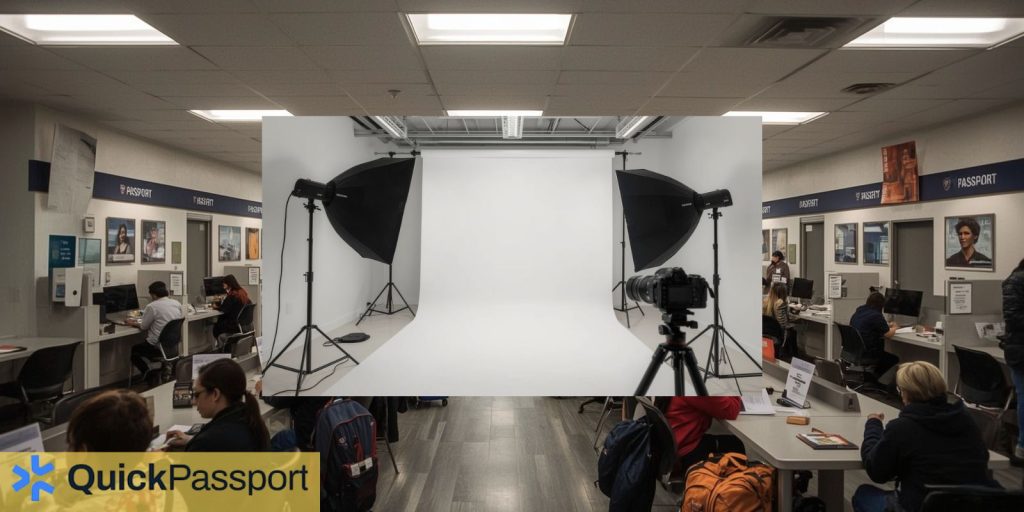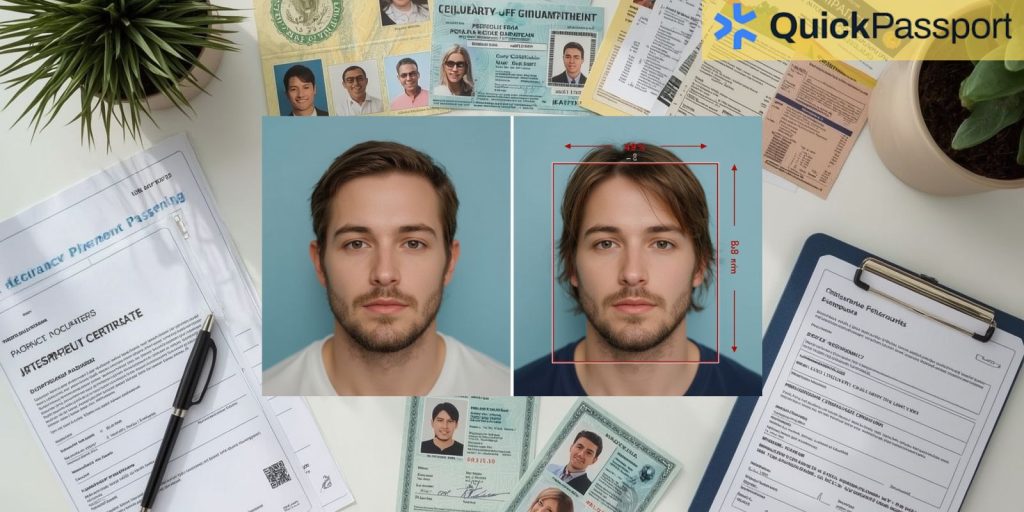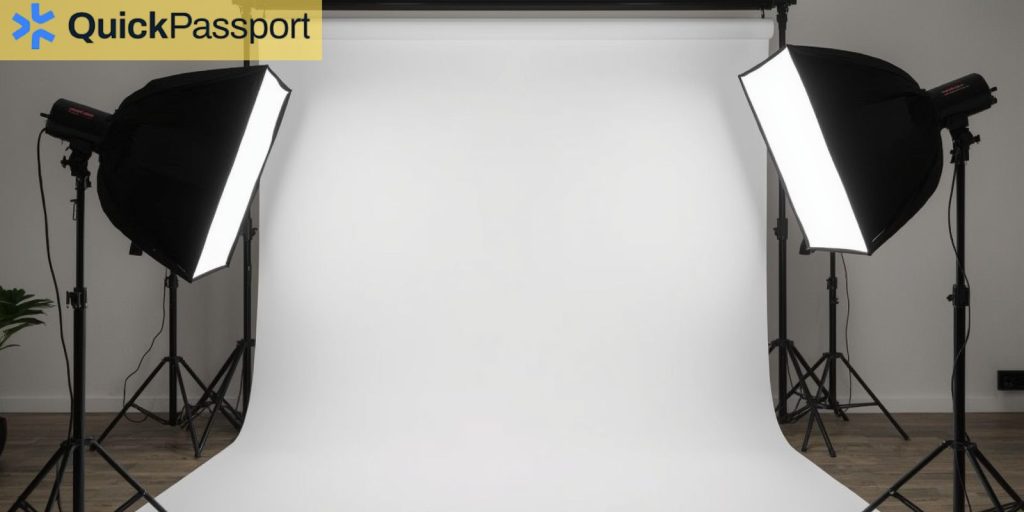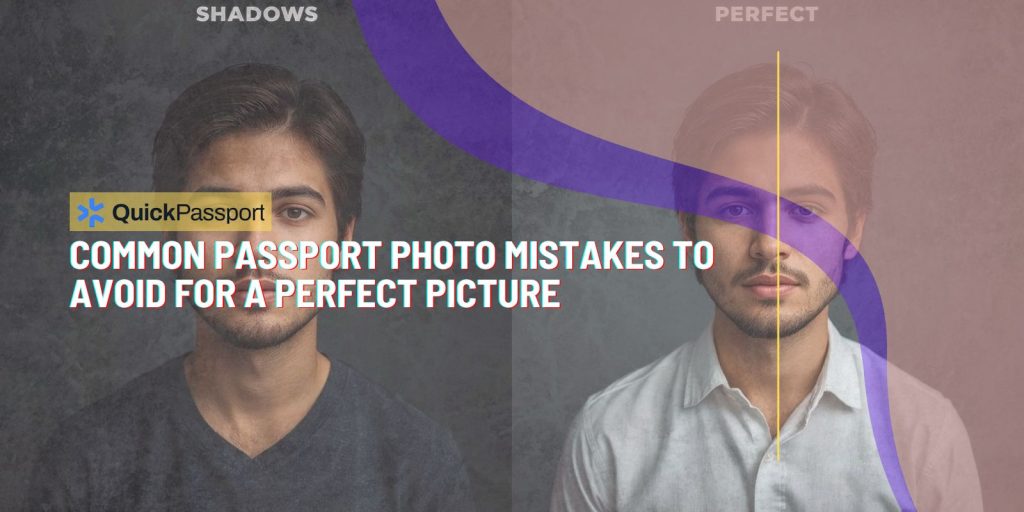Getting your passport photo right the first time can save you significant time, money, and frustration during your passport application process. Unfortunately, many applicants unknowingly make critical errors that result in photo rejections, forcing them to restart the entire process. Understanding the most common passport photo mistakes to avoid is essential for ensuring your application moves smoothly through the approval system.
Passport photos must meet strict government standards, and even minor deviations can lead to immediate rejection. These requirements exist for security and identification purposes, making consistency across all passport documents crucial for international travel safety. When your photo doesn’t meet these specifications, it can delay your passport processing by weeks or even months, potentially disrupting travel plans and causing unnecessary stress.
The State Department rejects thousands of passport applications annually due to improper photos, with many applicants unaware of the specific requirements until it’s too late. Common issues range from incorrect sizing and poor lighting to inappropriate facial expressions and clothing choices. Each rejection not only delays your application but also requires additional fees and time to correct the problems.
Professional passport photo services understand these requirements intimately and can help you avoid the most frequent pitfalls. However, whether you choose professional services or attempt to take photos yourself, knowing what mistakes to avoid is crucial for success. The investment in getting your photo right the first time far outweighs the costs associated with multiple rejections and resubmissions.
This comprehensive guide will walk you through the most common passport photo mistakes and provide practical solutions to ensure your photo meets all government standards. By understanding these requirements upfront, you can approach your passport photo session with confidence and avoid the delays that plague many applicants.
Key Takeaways
- Photo dimensions must be exactly 2×2 inches – Any deviation from this standard size will result in automatic rejection, regardless of photo quality
- Head positioning is critical – Your head must occupy 50-69% of the photo’s vertical space, measured from the bottom of your chin to the top of your head
- Background requirements are non-negotiable – Only plain white or off-white backgrounds are acceptable, with no shadows, patterns, or colored surfaces
- Facial expressions must remain neutral – Smiling, frowning, or any exaggerated expressions will cause immediate photo rejection
- Eye visibility is mandatory – Both eyes must be clearly visible and open, with no obstructions from hair, glasses, or shadows
- Clothing choices matter significantly – Avoid white clothing, uniforms, camouflage patterns, and anything that blends with the background
- Lighting must be even and professional – Harsh shadows, glare, or uneven illumination will result in photo rejection
- Photo quality standards are strict – Images must be sharp, clear, and printed on high-quality photo paper without digital alterations
- Recent photos are required – Photos must be taken within six months of your application submission date
- Professional services often provide the best results – Experienced photographers understand all requirements and can ensure compliance on the first attempt
Understanding Basic Passport Photo Requirements
Before diving into specific mistakes, it’s essential to understand the fundamental passport photo requirements established by the U.S. State Department. These standards ensure consistency across all passport documents and facilitate accurate identification at border crossings worldwide. Every requirement serves a specific security purpose, making compliance absolutely necessary for approval.

The standard passport photo must measure exactly 2×2 inches, with your head positioned centrally within the frame. The photo should show a clear, front-facing view of your face with both eyes open and visible. Your expression must remain neutral, with your mouth closed and no visible teeth. The background must be completely white or off-white, without any patterns, shadows, or colored elements.
Lighting plays a crucial role in passport photo acceptance, requiring even illumination across your entire face without harsh shadows or bright spots. The photo must be printed on high-quality photo paper with a matte or glossy finish, never on regular printer paper. Digital photos submitted online must meet specific resolution requirements, typically 600×600 pixels at 300 DPI.
Your clothing should contrast with the white background, making dark colors the preferred choice. Religious headwear is permitted only when worn daily for religious purposes, and a signed statement may be required. Glasses are generally discouraged due to potential glare and reflection issues, though they may be acceptable under specific circumstances.
The photo must be recent, taken within six months of your application submission. This requirement ensures that your appearance in the photo accurately reflects your current look for identification purposes. Understanding these basic requirements provides the foundation for avoiding the most common mistakes that lead to photo rejection.
Size and Composition Errors
One of the most frequent reasons for passport photo rejection involves incorrect sizing and poor composition. The 2×2 inch requirement is absolute, and photos that are even slightly larger or smaller will be rejected immediately. Many people assume that cropping a larger photo to 2×2 inches will suffice, but this often results in improper head positioning and scaling issues that don’t meet government standards.
Head positioning within the frame requires precise measurement, with your head occupying between 50-69% of the photo’s vertical space. This measurement extends from the bottom of your chin to the top of your head, excluding hair. Photos where the head is too large or too small within the frame will be rejected, even if the overall photo dimensions are correct. Professional photographers use specialized equipment to ensure accurate head positioning.
Centering issues frequently occur when people attempt to take passport photos themselves. Your face must be positioned directly in the center of the frame, both horizontally and vertically. Off-center positioning, tilted heads, or angled shots will result in rejection. The camera must be positioned at eye level to capture a straight-on view without any upward or downward angles.
Distance from the camera affects both head size and image clarity. Standing too close results in distortion and heads that appear too large, while standing too far away makes the head too small within the frame. Professional passport photo services use standardized distances and equipment to ensure proper scaling every time.
Digital cropping often introduces additional problems, particularly when people try to adjust photos taken for other purposes. Cropping can reduce image quality, create pixelation, and alter the proper proportions needed for passport photos. Starting with a photo specifically taken for passport purposes, rather than cropping existing photos, provides much better results and higher approval rates.
Background and Lighting Problems
Background and lighting issues represent another major category of passport photo rejections. The requirement for a plain white or off-white background seems simple, but many applicants underestimate how challenging it can be to achieve the perfect background without professional equipment. Shadows, color variations, and texture patterns in the background will cause immediate rejection, regardless of how minor they might appear.

Shadow problems occur frequently when inadequate lighting or improper positioning creates dark areas behind the subject. Even subtle shadows cast by the person’s head, shoulders, or hair onto the background will result in photo rejection. Professional photography studios use multiple light sources positioned strategically to eliminate all shadows and create perfectly even background illumination.
Lighting consistency across the subject’s face is equally critical. Harsh lighting from a single source creates unflattering shadows on one side of the face, while insufficient lighting results in dark, unclear photos that don’t meet quality standards. The lighting must be bright enough to clearly illuminate all facial features without creating glare or bright spots that obscure details.
Many people attempt to use household lighting or natural light for passport photos, but these sources rarely provide the even, professional illumination required. Window light can create directional shadows, while indoor lighting often has color temperature issues that affect photo quality. Flash photography without proper diffusion typically creates harsh shadows and red-eye effects that make photos unusable.
Color temperature consistency is another technical aspect that affects photo acceptance. Mixed lighting sources, such as combining natural light with artificial lighting, can create color casts that make the background appear off-white or tinted. Professional photographers use color-balanced lighting specifically designed for passport photography to ensure accurate color reproduction and background consistency.
Facial Expression and Appearance Mistakes
Facial expression requirements for passport photos are stricter than many people realize, and violations in this area lead to numerous rejections. The neutral expression requirement means no smiling, frowning, or any other emotional expression that significantly alters your facial features. Your mouth must be closed with no visible teeth, and your overall expression should appear natural but serious.
Eye requirements extend beyond simply keeping them open and visible. Both eyes must be clearly seen without obstruction from hair, glasses, or shadows. Your gaze should be directed straight at the camera, not looking up, down, or to either side. Squinting, winking, or any other eye expressions will result in photo rejection. Contact lens wearers should ensure their lenses don’t create unusual reflections or color changes.
Hair positioning can create unexpected problems in passport photos. Hair that falls across the face, covers the eyes, or creates shadows will cause rejection. While you don’t need to change your hairstyle dramatically, you may need to adjust your hair positioning for the photo. Hair accessories like headbands, clips, or decorative items should be removed unless they’re part of daily religious observance.
Makeup considerations for passport photos differ from everyday application. Heavy makeup, dramatic contouring, or bold lip colors can alter your natural appearance enough to cause identification issues. The goal is to look like yourself on a typical day, so makeup should enhance rather than dramatically change your features. False eyelashes, heavy eye makeup, or theatrical cosmetics should be avoided.
Facial hair must appear neat and well-groomed in passport photos. Dramatic changes in facial hair between the photo and travel dates can create identification problems, so consider your travel timeline when deciding whether to shave or trim before your photo session. The photo should accurately represent how you’ll appear during travel, ensuring smooth identification at border crossings.
Clothing and Accessory Issues
Clothing choices significantly impact passport photo acceptance, with several common mistakes leading to rejection. White or very light-colored clothing creates problems by blending with the required white background, making it difficult to distinguish where your body ends and the background begins. This lack of contrast can cause the photo processing system to reject your image automatically.

Uniform restrictions apply to various types of clothing that might be confused with official government or military attire. Camouflage patterns, military-style clothing, and clothing that resembles postal, airline, or other service uniforms should be avoided. These restrictions exist to prevent confusion about the photo subject’s official status or employment.
Eyewear presents particular challenges in passport photography. While prescription glasses are sometimes permitted, they often create glare, reflections, or shadows that obscure the eyes. Many passport acceptance facilities now recommend removing glasses entirely for photos. If you must wear glasses due to medical necessity, ensure they have anti-reflective coating and position yourself to minimize glare.
Jewelry and accessories should be kept minimal and conservative for passport photos. Large, flashy jewelry can create distractions or reflections that interfere with facial recognition technology. Earrings, necklaces, and other accessories should be simple and not create shadows or bright reflections. Religious jewelry worn daily is generally acceptable if it doesn’t interfere with clear facial identification.
Head coverings require special consideration and documentation. Religious head coverings worn daily for religious purposes are permitted, but you may need to provide a signed statement explaining the religious requirement. The head covering must not obscure any portion of your face from the bottom of your chin to the top of your forehead and from ear to ear. Fashion hats, caps, or non-religious head coverings are not permitted under any circumstances.
Technical Quality and Digital Issues
Technical quality standards for passport photos are remarkably strict, with digital and print quality issues causing many rejections. Photo resolution must meet specific requirements, typically 600×600 pixels at 300 DPI for digital submissions. Lower resolution images appear pixelated or blurry when processed, leading to automatic rejection by the passport processing system.
Print quality standards require high-grade photo paper with either matte or glossy finish. Photos printed on regular printer paper, copy paper, or low-quality photo paper will be rejected immediately. The photo must be sharp and clear throughout, with no blurriness, graininess, or pixelation visible anywhere in the image. Professional photo printing services typically provide the quality needed for passport acceptance.
Digital alteration or enhancement of passport photos is strictly prohibited and can result in application rejection or even fraud charges. This includes basic adjustments like color correction, brightness adjustment, or blemish removal. The photo must represent your natural, unaltered appearance. Even minor digital touch-ups that seem harmless can be detected by processing systems and cause serious problems.
Color accuracy plays a crucial role in passport photo acceptance. Photos with color casts, unusual tinting, or inaccurate skin tones may be rejected. Professional photography equipment ensures accurate color reproduction, while consumer cameras and phone cameras often struggle with color balance under various lighting conditions. If you’re seeking professional assistance with your passport photography needs, experienced photographers can ensure proper color accuracy.
File format requirements for digital submissions must be followed precisely. JPEG format is typically required, with specific compression settings that maintain image quality while meeting file size requirements. Other formats like PNG, TIFF, or RAW files may not be accepted by the processing system. Understanding these technical requirements before taking your photo can prevent costly delays and rejections.
QuickPassport – Denver: Your Professional Solution
QuickPassport – Denver specializes in providing professional passport photo services that meet all government requirements on the first attempt. Our experienced photographers understand the intricacies of passport photo standards and use professional-grade equipment to ensure your photos pass all inspection criteria. We’ve helped thousands of Denver residents avoid the common mistakes that lead to application delays and rejections.
Our studio features specialized lighting systems designed specifically for passport photography, eliminating the shadow and illumination problems that plague amateur photos. We use calibrated equipment to ensure proper sizing, positioning, and composition for every photo we take. Our digital systems are configured to meet exact resolution and quality requirements for both print and digital submissions.
The convenience of professional passport photo services extends beyond just technical compliance. We understand the time pressures many applicants face and offer same-day service for most requests. Our photographers can quickly identify and correct potential issues before taking your final photo, saving you the time and expense of discovering problems after submission.
Customer service at QuickPassport – Denver includes guidance on clothing choices, grooming considerations, and any special requirements for your specific situation. We stay current with all changes to passport photo regulations and can advise you on the best approach for your individual needs. Our goal is to ensure your passport application process proceeds smoothly from start to finish.
Frequently Asked Questions
Can I take my own passport photo at home?
While it’s technically possible to take passport photos at home, the strict requirements make it challenging without professional equipment. You’ll need proper lighting, a pure white background, and precise positioning to meet all standards. Many home attempts result in rejection due to shadows, sizing issues, or quality problems.
How recent does my passport photo need to be?
Passport photos must be taken within six months of your application submission date. This ensures your current appearance matches the photo for identification purposes. Using older photos, even if they still look like you, will result in application rejection.
Can I wear makeup in my passport photo?
Light, natural makeup is acceptable and even recommended for passport photos. However, avoid heavy makeup, dramatic contouring, or bold colors that significantly alter your appearance. The goal is to look like yourself on a typical day for accurate identification.
What should I do if I wear glasses daily?
Current guidelines recommend removing glasses for passport photos due to glare and reflection issues. If you must wear glasses for medical reasons, ensure they have anti-reflective coating and position yourself to minimize glare. Consider whether you’ll be comfortable removing glasses for airport security.
Are there specific clothing colors I should avoid?
Avoid white or very light colors that blend with the required white background. Also avoid uniforms, camouflage patterns, or clothing that resembles official attire. Dark, solid colors typically work best for passport photos.
Can I smile in my passport photo?
No, passport photos require a neutral expression with your mouth closed and no visible teeth. Smiling or any other facial expression that significantly alters your features will result in photo rejection.
What happens if my passport photo is rejected?
Photo rejection typically means your entire application is returned, requiring you to start the process over with new photos. This can delay your passport by several weeks and may require additional fees, depending on your application type.
How much does a professional passport photo service cost?
Professional passport photo services typically cost between $15-30, which is minimal compared to the potential costs and delays of rejection. The investment in professional photos often saves money in the long run by ensuring first-time acceptance.
Conclusion
Avoiding common passport photo mistakes requires understanding the strict requirements and either investing in professional services or carefully preparing for a self-taken photo. The most frequent errors involve sizing and composition problems, background and lighting issues, inappropriate facial expressions, clothing choices, and technical quality standards. Each of these areas has specific requirements that must be met exactly for photo acceptance.
Professional passport photo services offer the most reliable path to first-time acceptance, with experienced photographers who understand all requirements and use proper equipment. The relatively small investment in professional photos can save significant time, money, and frustration compared to dealing with rejections and resubmissions.
For those choosing to take their own photos, careful attention to every detail is essential. From ensuring proper lighting and background to selecting appropriate clothing and maintaining the correct facial expression, each element must be perfect for acceptance. The technical requirements for digital photos add another layer of complexity that professional services handle automatically.
Remember that passport photos serve a critical security function, making compliance with all requirements non-negotiable. Taking the time to get your photo right the first time ensures smooth processing of your passport application and helps you avoid delays that could impact travel plans. Whether you choose professional services or attempt the photo yourself, understanding these common mistakes puts you on the path to success.






